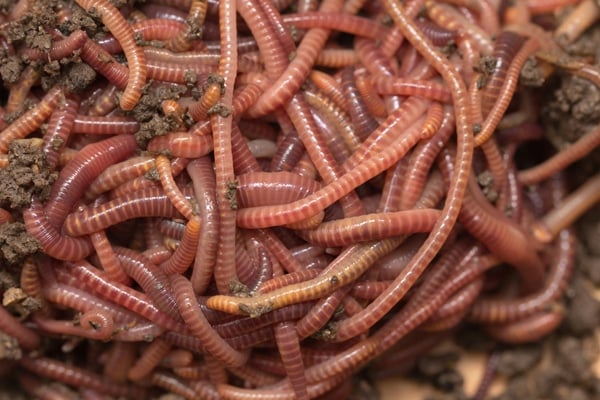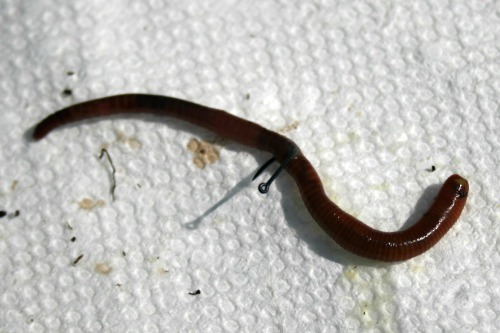Red Wiggler Express: Fresh Worms Delivered Right to Your Door
Red Wigglers: The Unsung Heroes of Organic Waste Recycling
Red wigglers, or Eisenia fetida, serve as vital agents in the organic waste reusing procedure, changing discarded products into useful vermicompost. As the globe increasingly seeks services to battle waste build-up and improve agricultural performance, recognizing the role of these worms becomes crucial.
What Are Red Wigglers?
The amazing durability of red wigglers, medically referred to as Eisenia fetida, emphasizes their vital role in natural waste recycling. These little, reddish-brown earthworms are normally discovered in decomposing raw material, such as compost piles and manure loads. Lake Hickory Bait. Unlike other earthworm types, red wigglers flourish in nutrient-rich atmospheres and are highly reliable at damaging down organic products, making them vital for vermicomposting

(Lake Rhodhiss Bait)In addition to their role in waste reduction, red wigglers add to soil health by enhancing dirt structure and aeration via their tunneling activities (Lake Hickory Bait). Their visibility in composting systems not just improves decomposition prices yet additionally promotes a sustainable technique to waste monitoring, showing their value in ecological conservation efforts
Benefits of Composting With Worms
Composting with worms, particularly red wigglers, provides many advantages that boost both waste management and soil wellness. These worms efficiently break down organic waste, transforming it into nutrient-rich vermicompost that enhances dirt. This process speeds up disintegration, allowing for a much faster recycling of kitchen area scraps and other natural materials compared to traditional composting methods.
Furthermore, the vermicompost generated by red wigglers is brimming with valuable bacteria, which assist improve dirt framework, aeration, and dampness retention. This enhances the total health of plants, advertising energetic development and enhanced yields in gardens and agricultural settings. Additionally, making use of worms in composting decreases the production of greenhouse gases, such as methane, contributing to a much more lasting waste monitoring system.

How to Start Vermicomposting
Establishing a vermicomposting system is a straightforward process that can yield substantial advantages for both waste management and dirt enrichment. To start, select an appropriate container, such as a plastic container or wooden box, with adequate air flow openings to ensure proper airflow. The measurements must preferably be around 2 feet by 3 feet, permitting enough room for the worms to grow.
Following, prepare bed linens material, which can contain shredded paper, cardboard, or coconut coir. This bed linens should be moistened to develop an appropriate environment for the worms. Once the bed linens is in place, introduce red wigglers (Eisenia fetida) right into the container, normally around one extra pound of worms for every square foot of surface.
Adhering to the positioning of worms, include natural waste, such as fruit and vegetable scraps, coffee grounds, and smashed eggshells. Stay clear of adding dairy, meat, or oils, as these can produce smells and attract pests. Place the container in a shaded, temperature-controlled location to preserve ideal problems for worm activity. With these actions, you will effectively start a vermicomposting system that adds to sustainable waste monitoring and enhances your soil.
Keeping a Healthy Worm Bin
(Red Wiggler Express)Maintaining a worm container flourishing requires routine focus and like make certain the health and wellness of the red wigglers and the performance of the composting process. Proper maintenance begins with monitoring the wetness levels; the bin should perspire but not waterlogged. An excellent guideline is to keep a consistency similar to a wrung-out sponge.
Oygenation is important. Carefully mixing the bed linens and food scraps every couple of weeks avoids compaction and makes sure that all worms have access to oxygen. Furthermore, it is very important to feed the worms appropriately. A balanced diet regimen of fruit and vegetable scraps, coffee grounds, and crushed eggshells must be used in small amounts to avoid overfeeding, which can cause odors and bugs.
Temperature level guideline is an additional crucial element. Red wigglers grow in a series of 55 to 77 degrees Fahrenheit. If the container ends up being as well warm or chilly, the worms may come to be worried - Lake Hickory Bait. Periodically inspect for indications of health and wellness, such as worm population growth and the visibility of healthy and balanced spreadings. By diligently taking care of these variables, one can keep a robust and efficient worm container.
Effect On Lasting Living
The successful upkeep of a worm bin not only profits the wellness of visit this website red wigglers but likewise adds dramatically to sustainable living techniques. By recycling organic waste, such as kitchen area scraps and yard debris, red wigglers help draw away significant amounts of product from landfills. This reduction in waste not only reduces greenhouse gas discharges yet also minimizes the environmental worry connected with waste management.
In addition, the spreadings created by red wigglers function as a nutrient-rich organic plant food, improving dirt health and wellness and promoting plant development. This natural choice to chemical fertilizers supports sustainable agriculture and gardening methods, lowering reliance on synthetic inputs that can hurt ecological communities. Additionally, worm composting promotes awareness of waste management, encouraging people and neighborhoods to take on even more sustainable behaviors.

Conclusion
In summary, red wigglers offer as essential factors to natural waste reusing through their effective disintegration of organic materials. Their capability to create nutrient-rich vermicompost improves dirt health and wellness and sustains sustainable agricultural practices. By incorporating vermicomposting right into waste administration strategies, people and neighborhoods can considerably lower waste while advertising ecological sustainability. The function of Eisenia fetida in fostering healthy ecological communities underscores the significance of these organisms in attaining sustainable living and improving dirt fertility.